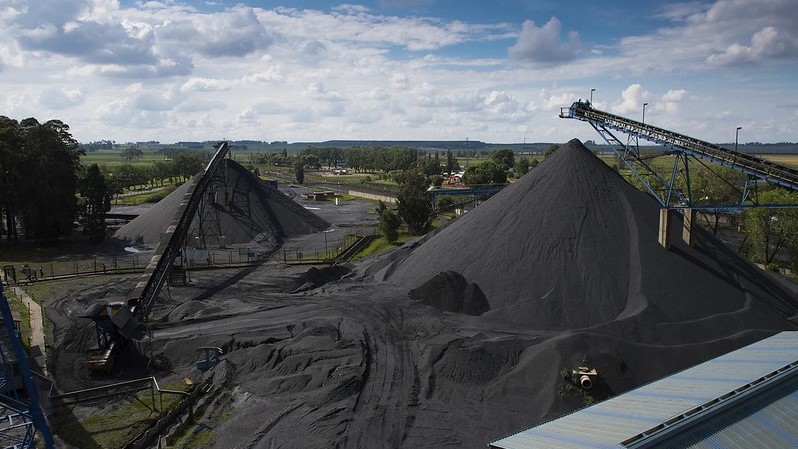
Asia’s imports of seaborne thermal coal surged to the highest on record in May as cheaper prices tempted buyers in the region’s developing economies.
A total of 78.38 million tonnes of the fuel used primarily to generate electricity is likely to be offloaded across Asia in May, according to data compiled by commodity analysts Kpler.
This is the most in Kpler data going back to January 2017, while Refinitiv data also shows record imports in May in data stretching back to January 2015.
The robust May outcome comes on the back of strength in both March and April, with those two months being the second- and third-strongest months according to Kpler data.
Rising thermal coal imports come as seaborne prices for the fuel continue to decline, with two of the more popular grades slipping to 16-month lows in the week to May 26.
Australian coal at Newcastle Port with an energy value of 5,500 kilocalories per kg (kcal/kg) , as assessed by price reporting agency Argus, ended last week at $96.54 a tonne, the first time since December 2021 that it has dropped below the $100 level.
Indonesian coal with an energy value of 4,200 kcal/kg slipped to $65.28 a tonne, the lowest since January 2022 and just over half of the peak of $120.86 reached in March last year in the wake of Russia’s invasion of Ukraine.
Both these grades are popular in China and India, the world’s two biggest coal importers, as well as in other developing Asian economies such as Vietnam, Thailand and Malaysia.
China’s imports of thermal coal remained at elevated levels in May, with Kpler estimating arrivals of 28.24 million tonnes, slightly below April’s 28.42 million and March’s 28.40 million.
It’s worth noting that the past three months have been the strongest in Kpler’s data going back to January 2017, with May’s imports being 137% higher than the same month in 2022.
China has turned to seaborne thermal coal to meet rising electricity demand, with thermal power plants generating 83 billion kilowatt hours (kWh) more in the first four months of the year, compared with the same period in 2022.
Coal-fired generation increased as hydropower struggled, with output from the clean power source dropping by 42 billion kWh in the January to April period.

India, the world’s second-biggest coal importer, has also ramped up purchases, with May arrivals of thermal grades estimated by Kpler at 16.62 million tonnes, up from April’s 14.37 million and the most since July last year.
Hotter than usual weather and solid economic growth are driving India’s imports, with lower prices meaning coal-fired power plants that run on imported fuel can make profits even when selling into India’s price-regulated electricity markets.
Other buyers in developing Asian markets are also seeing rising thermal coal imports, with Vietnam expected to land 2.90 million tonnes in May, up from 2.09 million in April and the most since June 2020.
Malaysia’s imports are expected to be 3.26 million tonnes in May, up from 2.64 million in April and the most since March 2020.
While lower prices and rising electricity demand are driving thermal coal imports in developing Asia, the advanced economies in north Asia are experiencing their usual seasonal lull between winter and summer peaks.
Japan, Asia’s third-biggest coal buyer, is estimated by Kpler to have imported 6.95 million tonnes of thermal grades in May, down from April’s 8.55 million and 10.60 million in March.
Fourth-ranked South Korea will import 6.03 million tonnes in May, down from 6.70 million in April and 6.42 million in March.
These two countries tend to favour high-grade Australian coal, the price of which has also been sliding.
The weekly Newcastle Index for 6,000 kcal/kg coal dropped to a 22-month low of $146.78 a tonne in the week to May 26, and is now down 67% from its record high of $442.89, reached in September last year.
The bigger fall in the price of higher quality Australian thermal coal when compared to lesser grades is likely a reflection of the stronger demand for lower-quality fuel in price-sensitive buyers in Asia.
(The opinions expressed here are those of the author, Clyde Russell, a columnist for Reuters.)
(Editing by Robert Birsel)
Comments